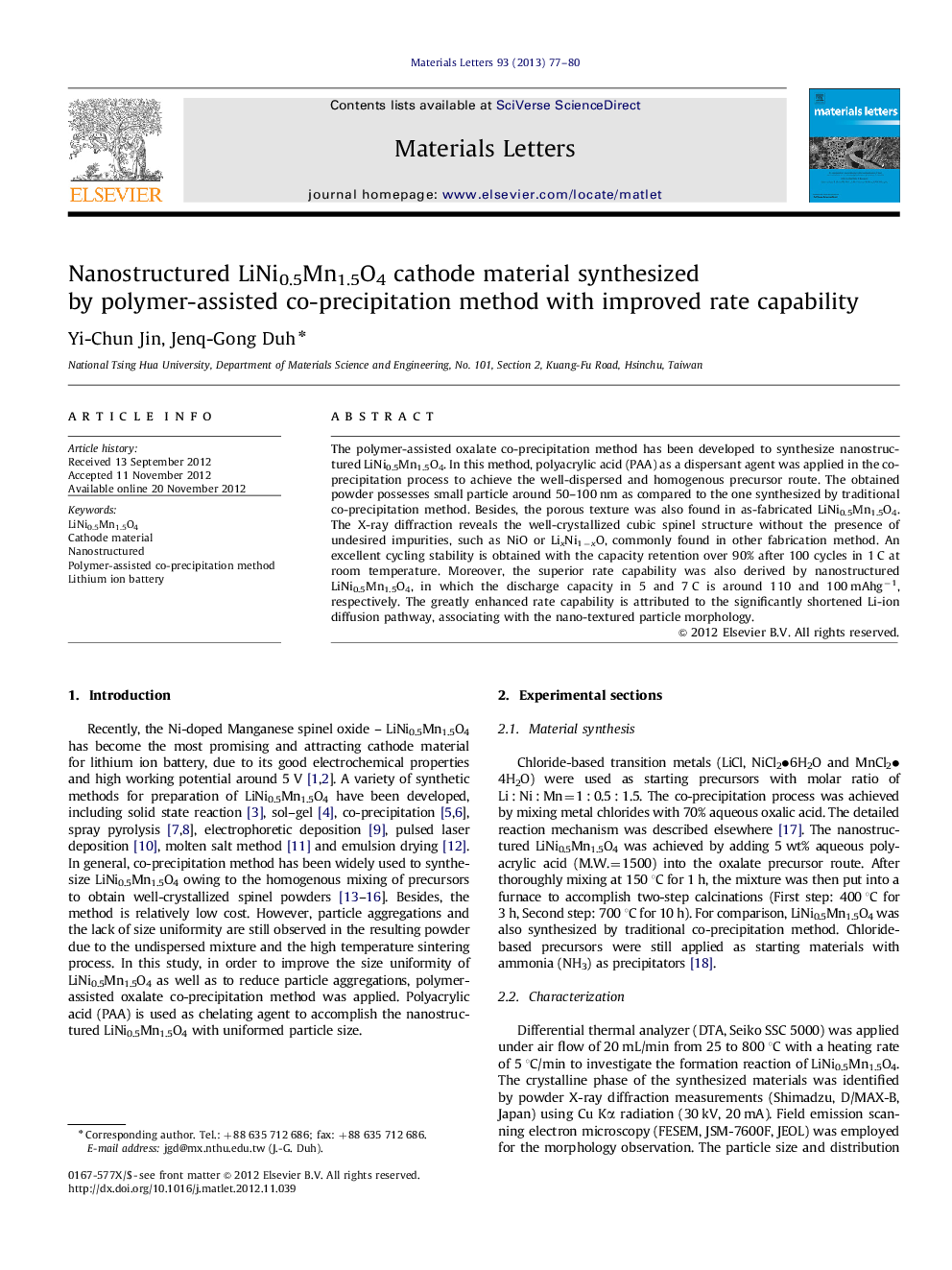| Article ID | Journal | Published Year | Pages | File Type |
|---|---|---|---|---|
| 1645535 | Materials Letters | 2013 | 4 Pages |
The polymer-assisted oxalate co-precipitation method has been developed to synthesize nanostructured LiNi0.5Mn1.5O4. In this method, polyacrylic acid (PAA) as a dispersant agent was applied in the co-precipitation process to achieve the well-dispersed and homogenous precursor route. The obtained powder possesses small particle around 50–100 nm as compared to the one synthesized by traditional co-precipitation method. Besides, the porous texture was also found in as-fabricated LiNi0.5Mn1.5O4. The X-ray diffraction reveals the well-crystallized cubic spinel structure without the presence of undesired impurities, such as NiO or LixNi1−xO, commonly found in other fabrication method. An excellent cycling stability is obtained with the capacity retention over 90% after 100 cycles in 1 C at room temperature. Moreover, the superior rate capability was also derived by nanostructured LiNi0.5Mn1.5O4, in which the discharge capacity in 5 and 7 C is around 110 and 100 mAhg−1, respectively. The greatly enhanced rate capability is attributed to the significantly shortened Li-ion diffusion pathway, associating with the nano-textured particle morphology.
► The polymer-assisted co-precipitation method is successfully developed for preparing nanostructured LiNi0.5Mn1.5O4 cathode materials. ► As-fabricated LiNi0.5Mn1.5O4 showed a nano-scaled particle size with high-uniformity and a porous texture. ► X-ray diffraction revealed high-crystallinity of as-fabricated LiNi0.5Mn1.5O4. ► Nanostructured LiNi0.5Mn1.5O4 performed a superior electrochemical behavior in rate capability for lithium ion battery storage.
